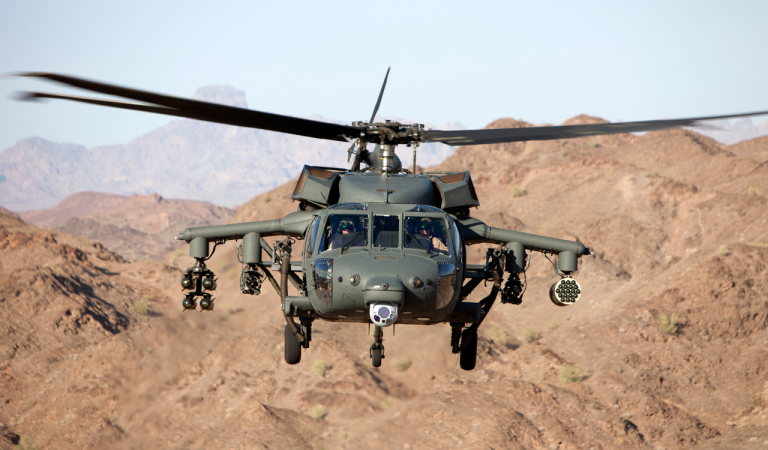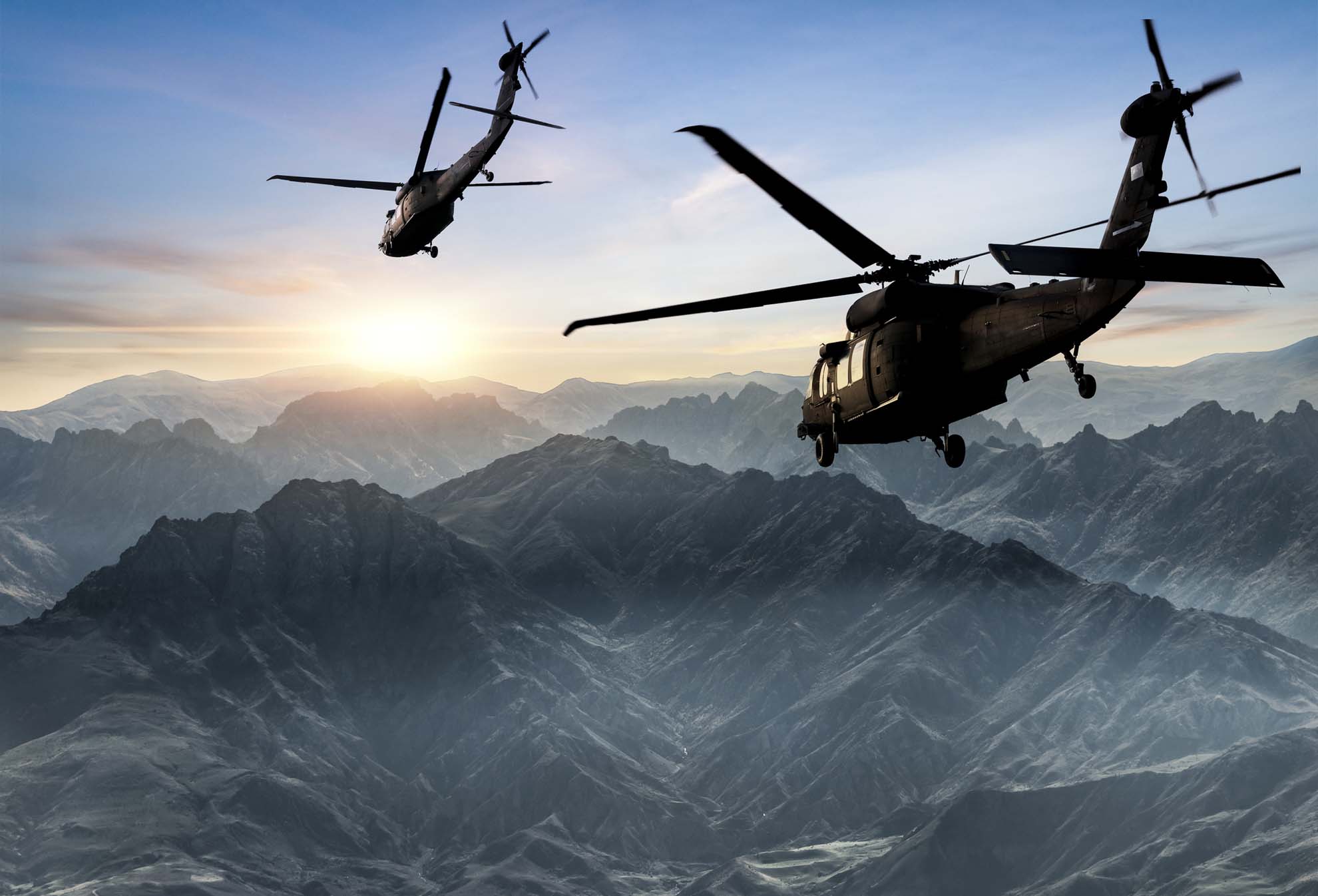Comprehending the Design Quality Behind the UH 60 Helicopter
Comprehending the Design Quality Behind the UH 60 Helicopter
Blog Article
UH-60: Technologies in Modern Helicopter Style
The UH-60 helicopter stands as a standard in contemporary air travel, showcasing significant innovations in style and technology that deal with the evolving needs of military operations. Its incorporation of innovative products not only boosts efficiency yet also addresses important security issues. The combination of sophisticated avionics has actually transformed functional capabilities, allowing for better situational recognition and decision-making effectiveness. As we discover the advancement and key technologies of the UH-60, it ends up being necessary to take into consideration exactly how these growths affect not just existing applications however likewise the future landscape of helicopter layout.

Evolution of the UH-60
The advancement of the UH-60 Black Hawk helicopter stands for a considerable landmark in aerospace design and armed forces air travel. Introduced in the late 1970s, the UH-60 was developed by Sikorsky Aircraft to meet the United States Army's demand for a flexible energy helicopter capable of executing a selection of goals. Its design highlighted ability to move, rate, and resilience, setting new standards for operational performance.
The UH-60 includes a distinct four-blade rotor system, which improves lift and stability, allowing it to operate successfully in varied atmospheres. Its airframe is created from innovative composite materials, contributing to a reduction in weight while maintaining structural integrity. The helicopter's layout additionally integrates improved aerodynamics, which improves fuel efficiency and enhances array.
Throughout the years, the Black Hawk has gone through several upgrades to boost its capabilities, including enhanced engines, advanced flight control systems, and modular systems for simple maintenance and adaptability. The helicopter's capacity to do objectives varying from army transport to clinical emptying has strengthened its role as a backbone of U.S. armed forces operations. The UH-60 Black Hawk continues to be a prime example of how innovation in helicopter design can significantly affect military performance and functional adaptability.
Advanced Avionics Systems
Innovations in avionics systems have transformed the capabilities of modern-day helicopters like the UH-60 Black Hawk, enhancing operational effectiveness and situational recognition (UH 60). The combination of advanced avionics permits improved navigating, trip, and communication management, making the UH-60 a lot more flexible in diverse mission accounts
One of the key features is the innovative electronic cabin, which employs multifunction screens that offer real-time data, ensuring pilots have instant accessibility to important flight info. This streamlining of information minimizes pilot work and improves decision-making procedures during complex procedures. Furthermore, the consolidation of general practitioner and inertial navigating systems enables exact positioning and route planning, enhancing mission execution in challenging settings.
Moreover, progressed avionics systems enhance communication capabilities with secure data web links and voice interaction systems, allowing smooth sychronisation with ground pressures and various other aircraft. The combination of automated trip control systems additionally contributes to improved stability and control, specifically in negative climate condition or during low-altitude maneuvers.
Engine and Efficiency Enhancements
Engine efficiency in modern-day helicopters has taken a substantial leap ahead, driven by developments that boost power, dependability, and effectiveness. At the leading edge of these improvements is the fostering of more powerful turboshaft engines, especially those employing innovative materials and technologies that make it possible for greater temperature level tolerances and raised thrust abilities. The UH-60 Black Hawk, for example, makes use of the T700-GE-701C engine, which features a dual-channel, full-authority digital engine control system. This system enhances efficiency while enhancing fuel intake and decreasing upkeep requirements.
Moreover, the assimilation of engine wellness monitoring systems enables for real-time diagnostics and anticipating upkeep, substantially boosting functional reliability. These systems not only alert teams to possible issues before they become essential but likewise promote much more efficient maintenance scheduling, thus lowering downtime.

Materials and Structural Innovations
Current advancements in materials and architectural design have transformed modern-day helicopter construction, enhancing both performance and toughness. The intro of innovative composite materials, such as carbon fiber reinforced polymers, has dramatically decreased weight while maintaining structural integrity. This shift not only boosts fuel efficiency but additionally boosts haul capability, allowing helicopters like the UH-60 to carry out more diverse objectives.
Additionally, advancements in aluminum alloys and titanium components have actually contributed to improved resistance to rust and fatigue, prolonging the life expectancy of crucial airframe components. The tactical use of these products has brought about a decrease in upkeep requirements and improved overall operational readiness.

In addition, the combination of computer-aided style (CAD) and additive production innovations has allowed more intricate geometries and light-weight structures, optimizing the aerodynamic efficiency of helicopter layouts. These advancements facilitate rapid prototyping and production, allowing producers to react promptly to developing goal demands.
Security and Survivability Attributes
Safety and survivability features in contemporary helicopter layout have become vital, showing the increasing demands for browse around this site goal effectiveness in challenging environments. The UH-60 Black Hawk, a noteworthy instance, incorporates advanced technologies to enhance staff and guest protection.
The helicopter additionally employs a ballistic defense system, that includes armored team seats and important systems shielding, reducing vulnerability to small arms fire and shrapnel. Boosted situational understanding is accomplished with advanced avionics and sensor modern technologies, enabling pilots to identify and avoid dangers properly.
In addition, the assimilation of redundancy in essential systems-- such as twin engines and several trip control channels-- makes certain ongoing procedure even if one system falls short. The UH-60 is equipped with sophisticated emergency flotation gadgets, boosting survivability in water landings. Jointly, these attributes not just improve the safety and security of workers but also raise mission success rates in hostile settings, demonstrating the commitment to excellence in helicopter layout.
Final Thought
The UH-60 helicopter stands for a substantial innovation in modern-day air travel modern technology, integrating innovative materials, innovative avionics, and robust safety and security functions. Its development reflects a commitment to boosting performance and functional efficiency while guaranteeing pilot and team survivability. The assimilation of light-weight compounds and advanced navigating systems underscores the helicopter's flexibility in numerous armed forces objectives. In general, the UH-60 works as a criteria for future advancements in helicopter layout, personifying durability and versatility in contemporary military procedures.
The UH-60 helicopter stands as a criteria in modern-day aeronautics, showcasing substantial advancements in design and technology that provide to the progressing needs of army procedures. As we discover the development and essential advancements of the UH-60, it becomes crucial to think about how these developments influence not only current applications click site yet likewise the future landscape of helicopter style.
Presented in the late 1970s, the UH-60 was developed by Sikorsky Aircraft to satisfy the United States Army's demand for a versatile energy helicopter capable of executing a variety of goals. The UH-60 Black Clicking Here Hawk continues to be a prime example of just how development in helicopter design can dramatically influence armed forces effectiveness and operational flexibility.
Generally, the UH-60 offers as a standard for future developments in helicopter layout, personifying strength and versatility in contemporary armed forces procedures.
Report this page